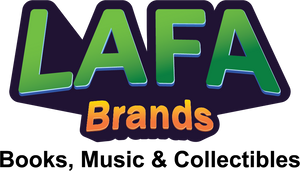
Mama's Last Hug
Primatologist Frans de Waal explores the fascinating world of animal and human emotions.
Frans de Waal has spent four decades at the forefront of animal research. Following up on the best-selling Are We Smart Enough to Know How Smart Animals Are?, which investigated animal intelligence, Mama’s Last Hug delivers a fascinating exploration of the rich emotional lives of animals.
Mama’s Last Hug begins with the death of Mama, a chimpanzee matriarch who formed a deep bond with biologist Jan van Hooff. When Mama was dying, van Hooff took the unusual step of visiting her in her night cage for a last hug. Their goodbyes were filmed and went viral. Millions of people were deeply moved by the way Mama embraced the professor, welcoming him with a big smile while reassuring him by patting his neck, in a gesture often considered typically human but that is in fact common to all primates. This story and others like it form the core of de Waal’s argument, showing that humans are not the only species with the capacity for love, hate, fear, shame, guilt, joy, disgust, and empathy.
De Waal discusses facial expressions, the emotions behind human politics, the illusion of free will, animal sentience, and, of course, Mama’s life and death. The message is one of continuity between us and other species, such as the radical proposal that emotions are like organs: we don’t have a single organ that other animals don’t have, and the same is true for our emotions. Mama’s Last Hug opens our hearts and minds to the many ways in which humans and other animals are connected, transforming how we view the living world around us.
- In Stock Out of Stock
- WW Norton
- 9780393635065
- March 12, 2019
- Stock Photo
- 336
- L 24.3cm x W 16.5cm x H 2.8cm
Book Condition Notes
New: A brand-new, unused, unread copy in perfect condition.
Like New: A copy that looks unread and in perfect condition. Dust jacket is intact, with no nicks or tears. The spine has no signs of creasing. Pages are clean and are do not have any notes or folds of any kind. May have a remainder mark. (usually black or red in colour and is usually a dot or line on the bottom of the book on the page edges).
Very Good: A copy that has been read but is in great condition. May have slight cosmetic defects such as marks, wears, cuts, bends and crushes on the cover, pages, spine and dust jacket if applicable. Pages and dust cover (if applicable) are intact and do not have any notes or highlighting. The spine remains undamaged. May have a remainder mark (usually black or red in colour and is usually a dot or line on the bottom of the book on the page edges).
Good: A copy that has been read but in clean condition. The spine, cover, pages and dust jacket (if applicable) may show signs of wear such as marks, wears, cuts, bends and crushes. Pages and dust cover (if applicable) are intact and do not have any notes or highlighting. May have a remainder mark (usually black or red in colour and is usually a dot or line on the bottom of the book on the page edges).
Acceptable: All pages are intact; the cover is intact. The spine, cover, pages and dust jacket (if applicable) may show signs of considerable wear such as marks, wears, cuts, bends and crushes. Pages can include limited notes in pen or in highlighter, but the notes do not obscure the text. May have a remainder mark (usually black or red in colour and is usually a dot or line on the bottom of the book on the page edges).

